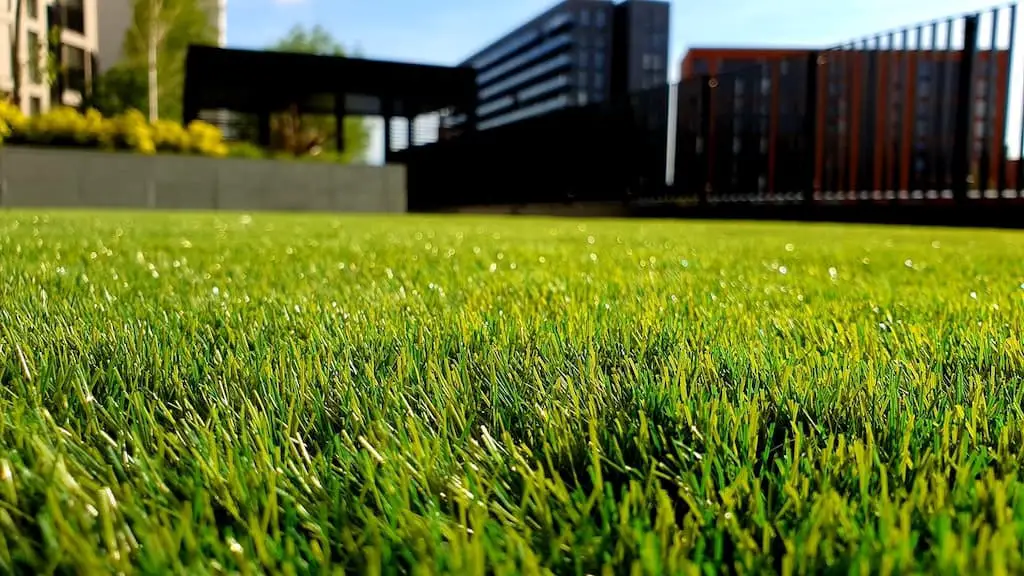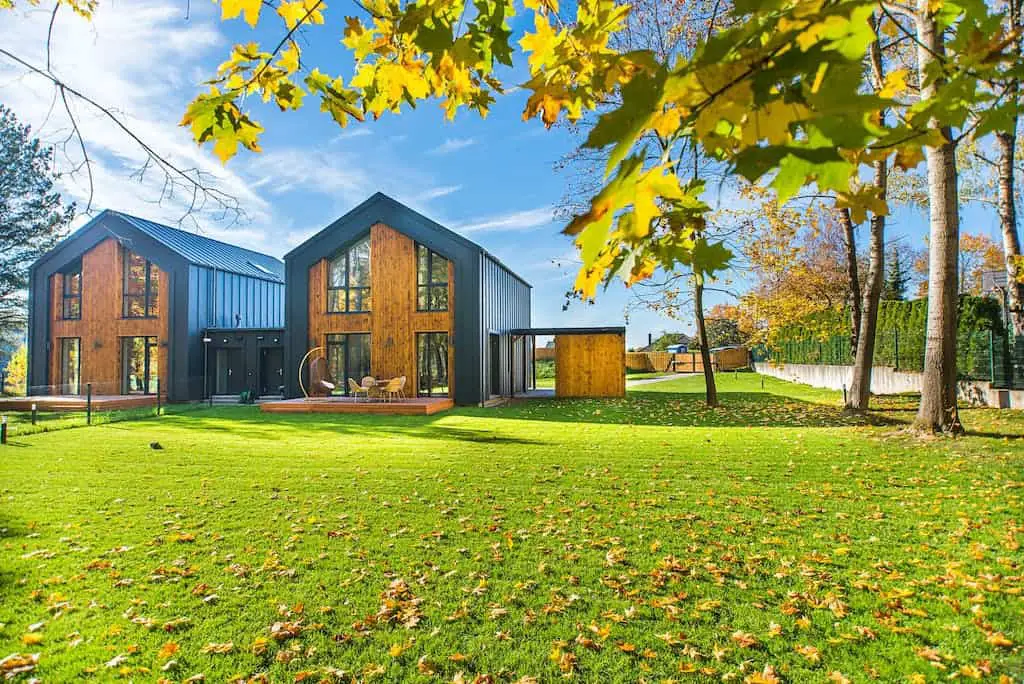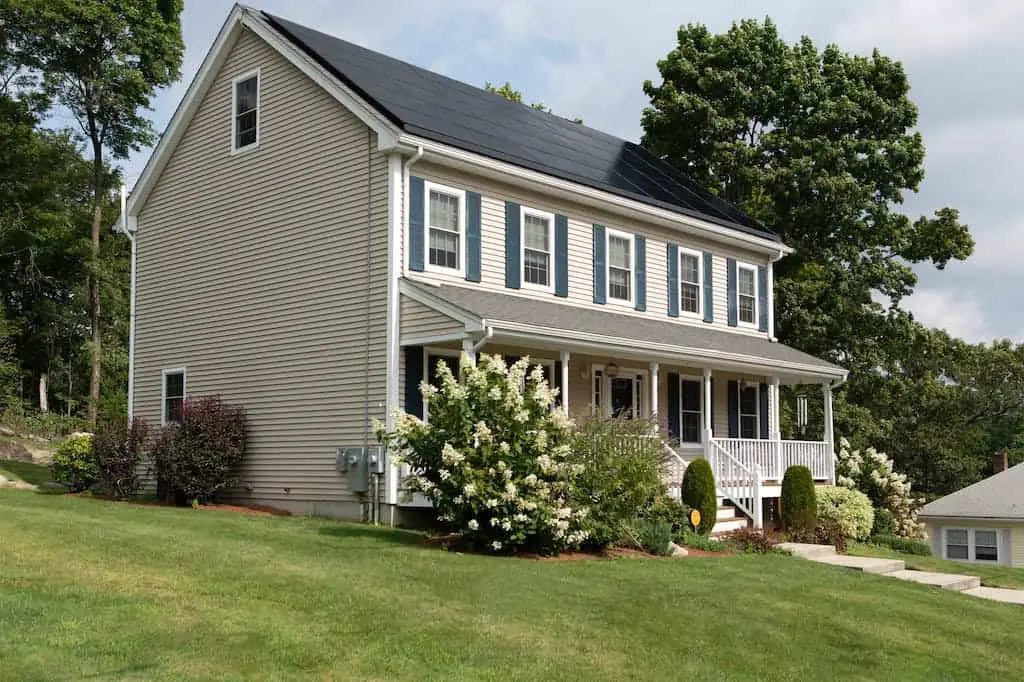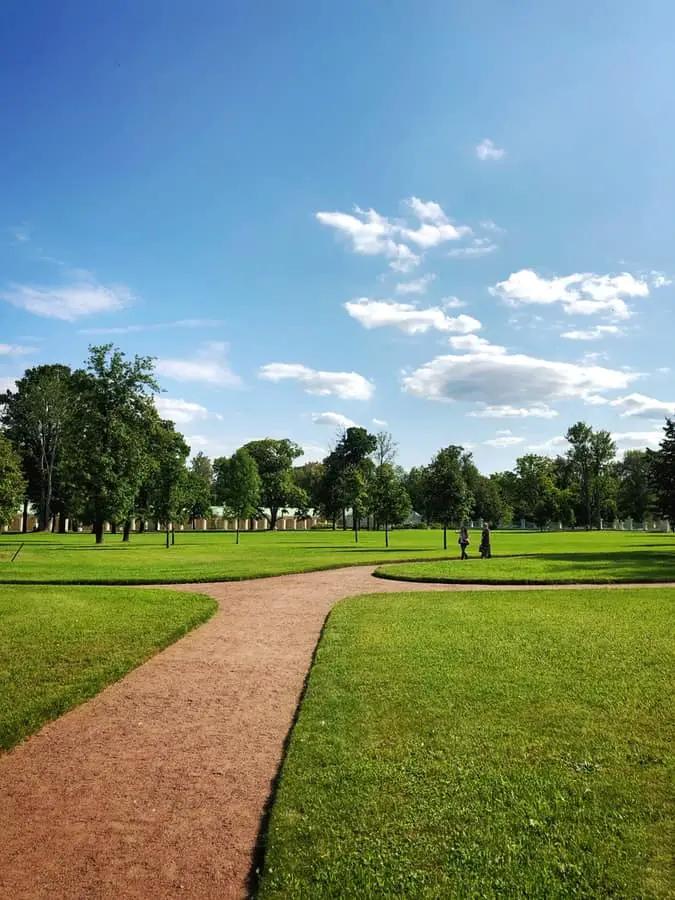Building organic lawns or shifting to organic lawn care is an emerging trend. The new generation is working hard to be more environmentally conscious and responsible. Making the shift to, or at least heading in the direction of organic lawn care is something that every homeowner can do without a great deal of trouble to make a positive impact on this earth’s health.
Homeowners dump somewhere in the ballpark of 80 million pounds of chemical pesticides on their lawns each year. When comparing pounds per acre, homeowners use more chemicals than farmers. The sad part is, they aren’t producing anything but green grass with all of those chemicals.
Somewhere along the way, the lawncare and chemical industries have convinced homeowners that it is okay (or even necessary) to poison our earth to have a beautiful green lawn. When did we go from taking pride in our property and caring for our families to poisoning the land and ignoring the consequences?
By definition, organic lawn care is managing a lawn without the use of any synthetic fertilizers or pesticides. Organic lawn care requires thoughtful actions and a commitment to follow through. It is not easy, and it tends to cost a bit more if you purchase all of your organics commercially.
Table of Contents
Benefits of Organic Lawn Care
Organic lawn care is not only more environmentally friendly and safer for the earth, but over time, your lawn will evolve to be less maintenance and more hardy than ever before. Thank you for exploring the benefits of organic lawn care.

Reduction in Chemical Exposure
Organic lawn care is better than chemical lawn care because it doesn’t involve all of those chemical-based insecticides, fungicides, and weed killers, which are hazardous for the lawn and very harmful to the environment. Organic lawn care is every person’s opportunity to make a difference for the better.
To truly have an organic lawn, you must only use completely natural products to nurture your soil and grass. This will take some getting used to, especially if you are one of those people who lays down the weed and feed after every mowing.
If you have been paying one of the many chemical lawn care companies (almost all lawn companies use chemicals), you can expect them to send over their best salesperson to convince you that their products are completely safe and that you should continue using their services. You need to do your research and understand why these chemicals are so dangerous. Their livelihood depends on you and your lawn remaining chemically dependant.
Through organic lawn care, you can dramatically reduce your family’s exposure to chemicals. By treating your lawn organically, you will eliminate the need to worry about precautions or avoiding the yard after treatment. Organic fertilizers used in the treatment are much safer than chemical-based fertilizers because they are natural. Your family, friends, and pets will thank you.
Revitalization of the Ecosystem
The process of organic lawn care revitalizes the ecosystem of your lawn. Chemical fertilizers are made up of compounds that deprive the soil of the vital nutrients your lawn needs and kills off many of the beneficial microbes that are there to help your lawn. On the outside, the lawn may look fine and healthy, but under that thin green veil lies a deprived and vulnerable ecosystem, making the lawn susceptible to many harmful microbes and pests.
Organic treatments improve your soil’s overall condition and enable it to keep its natural nutrients and microbes intact, the way that Mother nature intended. Overall, organic lawn care may be the one step that you can take to have the most significant impact on your property and your family’s health.
Moreover, you will be doing your part to stop these hazardous chemicals from leaching into our groundwater, lakes, and rivers. Organic lawn care saves the ecosystem from this problem as organic fertilizers consist of natural materials that release slowly into the soil and take care of the ecosystem.
Improved Soil Function
It doesn’t happen overnight (you’ve been chemically treating for years), but your yard will adjust to the organic treatment and will become healthier and more robust than ever. Conditioning the soil organically enhances soil function. Rather than depleting, organic fertilizers will help build up your soil’s ability to retain water and nutrients. Organics enable the ground to hold all the vital microflora, rejuvenating the soil’s immune function. The natural microflora of the soil is essential to a healthy ecosystem.

Transitioning to Organic Lawn Care
Shifting from chemical lawn care to organic lawn care will take time, but it is worth it. Over time, your lawn will be healthy’ lush, safe, and low maintenance.
Hiring it Done
The easy way to do this would be to find a lawn care company specializing in organic lawn care. If you can find the right company and don’t mind paying for the service, this will be your easiest route.
Be aware that anyone can advertise for any keyword. There is no google police making sure that they are advertising truthfully. If I google search organic lawn care in my area, the first few ads that pop up are chemical lawn care companies whose websites make no mention of organic lawn treatments. You need to do a bit of searching and find someone who can come out to your property and discuss your options thoroughly. You want someone that specializes in this.
If you are going to hire the work done, be prepared to pay more. Organic products cost more than chemical alternatives.
In the long run, it will level off, but at first, there will be much work to be done to make up for years of chemical treatments.
Do it Yourself Guidelines – The Short List
If you choose to do it yourself, it will take less financial commitment but more mental and physical commitment. First, stop using harmful chemical-based products in your lawn and shift to organic fertilizers. Do your research and follow the directions. The applications will be a bit different but similar.
Perform a Soil Test
I’m not a big tester sort of guy, so I would likely skip this part, but if you are the type who likes a clear path and sound data, then you might want to get a soil test. Usually, you can find a place where you can send in a bit of soil and have it tested relatively cheaply. In our area, the local university does soil tests for around twenty bucks, and you get back your results and some useful info on what steps to take next. Alternatively, you can test your soil by buying a soil test kit. This might be the way to go if you feel that you should test fairly often.
As I said, I’m not a big tester, but I’ve been doing this for a long time. If you spend a bit of time out in your yard looking at the soil and the grass that you have growing now, you will likely be able to figure out what to do next simply through observation.
Irrigation
If you have a sprinkler system and it’s watering every other day or so, start to wean it off a bit. Your lawn will be healthier with less frequent but deeper watering, which encourages deep root growth. This makes your lawn healthier. Frequent watering and fertilizing schedules are a staple of the chemical and irrigation industries. This makes your lawn dependent on their services.
Aeration
If your soil seems hard and compacted, it will benefit from core aeration. Rent yourself a good core aerator and get it done.
Composting
Once aeration is done, amend your topsoil by spreading a compost layer over it. Not so deep as to bury the blades of grass. An inch or two will do for now. Find a good quality, aged compost.
Mowing
Set your mower high. Mow at the height of three inches. Tall grass has deeper roots and shades the soil, keeping down weeds and holding moisture.
Fertilizing
Keep an eye on it. If it starts to look yellow, it likely needs some fertilizer. You can do another round of compost or use an organic fertilizer such as Garden WOW because it is entirely organic, and it helps control weeds through the use of corn gluten.

A Deeper Dive on a Few Topics
Thatching
Thatchers remove the layer of dead grass that is lying on top of your soil. Thatch happens because of overwatering and chemical pesticides and fertilizers. Once your lawn is organic, this won’t be an issue.
I would not bother thatching since as soon as you start adding compost to your lawn, that thatch will break down and provide more nutrients.
Aeration
Aeration is recommended and needed on most residential lawns for several reasons. First of all, it is likely that your developer stripped off all of the natural topsoil and sold it when he started your subdivision. Then, he ran heavy equipment over the area for months or years to shape the land and build the houses. Then, he brought in as little topsoil as he could get away with and still grow grass. He took that topsoil, ran a bunch of equipment over it, and then seeded it.
You have likely been overwatering it and applying chemical fertilizers, and then it’s been cut with a big zero-turn mower once a week.
This is why core aeration machines were created. Core aerators are motorized machines that you run all over your lawn to pull out small plugs of the hard topsoil. The device leaves the plugs on top of the lawn and leaves the holes open. This allows moisture and nutrients to get down into the soil, which, over time, will help your lawn.
Core aeration is a great first step when you begin your journey toward an all-organic lawn. Core aerate, spread compost, and then water deeply.
If your lawn is very compacted, you may want to do this spring and fall for a few years, but once your lawn has adapted to its new organic lifestyle, it probably won’t be necessary.
Composting and Topdressing
Compost is broken down organic matter that will help protect and nourish your soil. Apply it right after you aerate, spread it evenly, and then water deeply.
If you are starting a new lawn, mix it into the top 4 inches of topsoil before you seed to give your lawn a good start.
For your established lawn, topdressing with compost a few times may be sufficient; other times, topdressing and overseeding may be warranted.
Compost enhances the growth of vital microbes, which fix nitrogen from the air and release the right spectrum of nutrients in the soil. Organic materials help the soil hold in moisture and plenty of oxygen needed by the roots and the microflora.
Just look at what you’ve got. If the existing lawn is in terrible shape and it has been cut very short, and the soil is very hard, then you’ll likely want to overseed. If the grass looks relatively healthy and tall, just rake a bit of compost in and let it grow. As with any plant, grass doesn’t want to be completely buried, so multiple thin layers of compost with a few weeks in between are better than one thick layer, which may cause the grass to struggle.

Dealing with Pests
Lawns can occasionally face the problem of grubs and other pests. The chemical guys will have you out there digging holes, counting grubs, and applying deadly chemicals. Grubs and other pests are part of nature. They come and go, just like everything else. Over the years, I have never seen a huge problem. The worst case is when animals come into your yard and dig them up to eat them. This can leave a bit of a mess, but that heals with time.
Pests in your grass are typically not a concern. Keep treating organically, mow tall, water deeply, and your lawn will be able to withstand almost anything. Weak, dependent lawns are easily turned, but an old, established organic lawn is very hard to kill. My advice is to patch any holes with some compost or soil and a bit of seed and just ride it out.
Avoid Raking
Avoid raking and bagging the fallen leaves. The landscape industry has created the cycle of removing leaves and then bringing in fertilizer as a great way to ensure extra work both spring and fall.
It makes much more sense to let the leaves decay and turn into fertilizer. Let work and less cost. Just mow the leaves with your mulching mower and leave them. Decaying leaves are compost.
Leaves cause problems only when they smother plants.
Deep layers of wet leaves on top of tiny plants can kill plants. If you have many trees, and the leaves get deep, you may need to remove some of them and use them in an area of your yard where you can use a bit of extra mulch, like under some shrubs or larger trees. Just don’t pile the leaves up at the plants’ base, as this will promote rot and animal chewing.
Ongoing Organic Lawn Maintenance
The first few years might be struggle, depending on how bad your lawn is now, but once your soil is back into healthy shape and your grass is adjusted to the average rainfall for your area, the maintenance will be very slight. Over time, you will need to fertilize less, if at all.
Continue to mow no lower than three inches and cut when it gets around four inches. Keep your blades sharp. Sharp blades let the grass recover more easily. Mow when the grass is dry so that you don’t mat it down. A lighter mower is better since it compacts less and disturbs less. If you have a large yard and need a rider, go for wide tires to disperse the weight, turn gently and alternate cutting patterns to avoid wheel ruts.
Your lawn probably won’t need watering once it has been weaned off of the sprinkler system unless you live in a very dry area where grasses wouldn’t grow naturally. If there are big grassy fields in your part of the world, you shouldn’t need to water yours. Healthy grass will go dormant if it gets too dry, and then it will pop right back once it rains again.
Weeds will become less and less of a problem over time. The best defense against the weeds is to have a thick green covering of healthy grass.
At first, you may want to go after weeds manually and use the suggested weed-suppressing organics, but in time they will be minimal and more diversity in your landscape will make it more hardy.
Lastly, enjoy your organic lawn and feel proud of yourself as you contribute to the cleanup of our environment.
Show your yard off to your neighbors and tell them about the lack of long-term maintenance and the money savings.
Who knows, you may start an organic revolution in your neighborhood!

